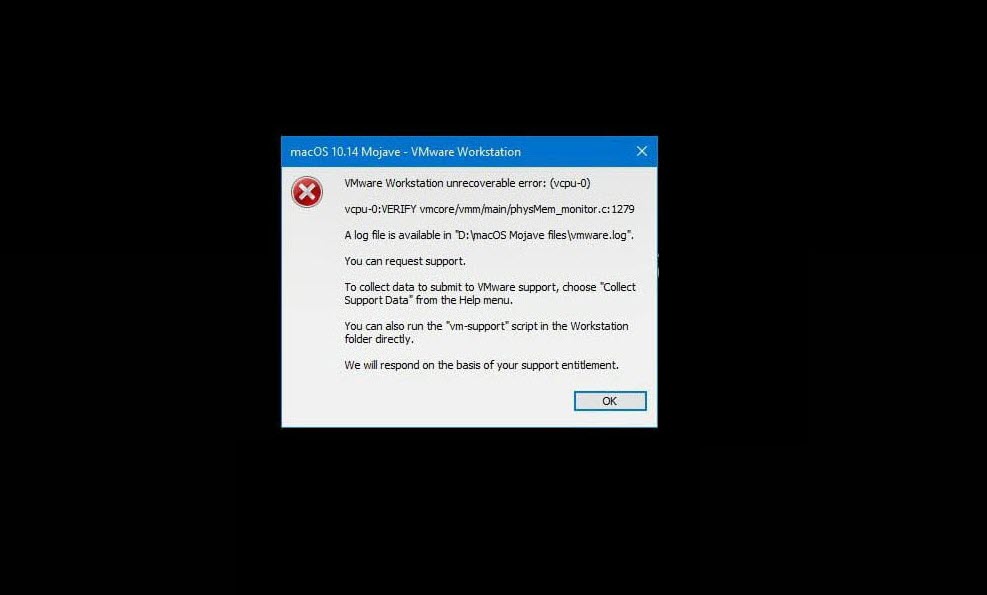

Name the virtual machine anything you want and click “ Next“.ħ. Select the “ Linux” radio option and then “ Ubuntu” from the drop-down menu.Ħ. We now need to select the operating system type. Now, select the “ Installer disk image file” radio option, click the “ Browse” button, select the extracted ISO file, and click on the “ Open” button. Here, select the “ Typical” radio option and click “ Next“.Ĥ. After opening VMware, select the “ File → New Virtual Machine” option to create a new virtual machine.ģ. After extracting the ISO file, open the VMware application by searching for it in the start menu.
#Os x vm wont boot vmware zip file
After downloading, open the ZIP file and drag and drop the ISO file inside it to your desktop.Ģ. Now, download the latest version of the Plop Boot Manager from the official site. First, plug-in the bootable USB drive into your system. Though sounds complicated, it is pretty easy. That is, we use a lightweight boot manager in VMware to boot into the USB drive.

Boot from Bootable USB Drive in VMwareĪs VMware doesn’t support booting from USB directly, we need to do a little bit of magic. Note: The below steps are the same even if you are using VMware Player. However, even if you have a USB 3.0 or higher drive, it shouldn’t matter that much in most cases. Also, for compatibility’s sake, USB 2.0 is preferred. Preparationīefore moving forward, I assume that you already have a bootable USB drive. Without further ado, let me show you the way to do it. It doesn’t matter what operating system is in the USB drive. If you are ever in this situation, though there is no straightforward way, we can bend the rules a bit and boot from a bootable USB drive. Now, I know most of you might never face the situation where you need to boot from a USB drive in VMware, but trust me I’ve seen this situation arise a couple of times. However, if you have a bootable USB drive, there is no clear cut way to boot from USB in VMware.


 0 kommentar(er)
0 kommentar(er)
